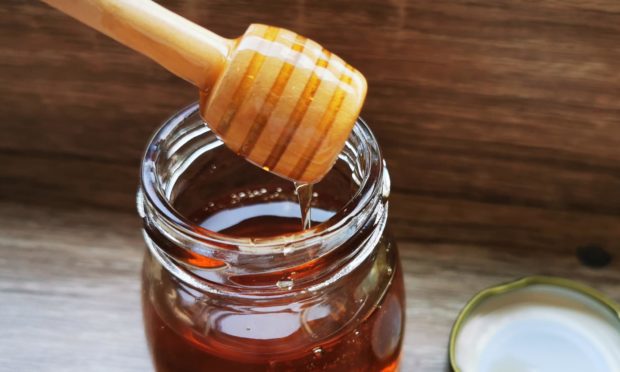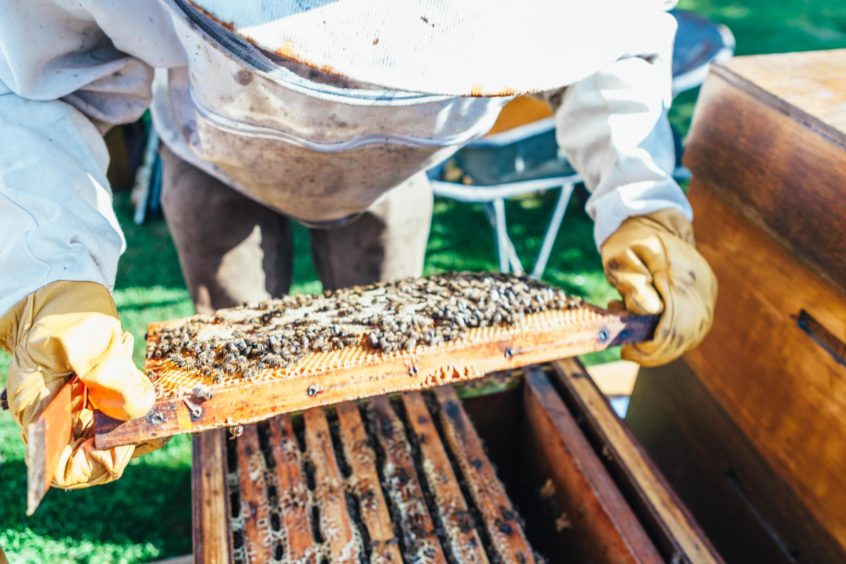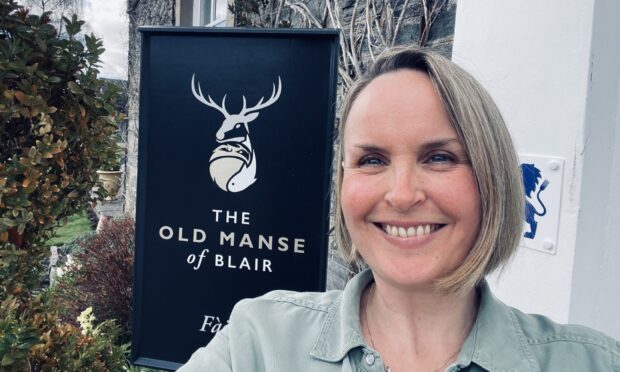After tests revealed some supermarket own-brand products could be bulked out with sugar syrup, Tesco has joined calls for a national testing regime.
Food standards officials are assessing the extent of potential honey adulteration in Scotland and the rest of the UK after reports of sugar syrup being added to own-brand products sold in some supermarkets.
Tesco has called for a national testing regime to be put in place in order to identify honey products that have undisclosed added ingredients.
It follows reports in the Mail on Sunday newspaper that tests conducted on own-brand honey from four major supermarkets suggested they had, unbeknown to the retailers, been adulterated with the addition of syrups made from rice and corn.
Although such added ingredients would not make products unsafe for consumption, it would mean they fall short of industry standards.
Supermarkets say they believe their honey is pure and can be directly traced back to beekeepers, adding that regular tests are carried out to ensure the honey sold in stores fully complies with legal standards.
But in response to this latest investigation, Tesco said: “We recognise that honey authenticity testing is a complex area and call on the industry, governments and testing laboratories to work collaboratively to build a more transparent testing regime.”
Claims investigated
Food Standards Scotland says it is working with the Food Standards Agency – responsible for public health in relation to food in England, Wales and Northern Ireland – to assess just how widespread the problem is in this country.
A spokesperson said: “Food Standards Scotland officials are working closely with colleagues from the Food Standards Agency to fully understand the extent of the concerns around honey authenticity raised over the weekend.
“Honey is a natural, but complex product and there are a number of different testing processes which are used to determine authenticity. Wherever possible these methods should be internationally recognised and validated, and at this early stage in the investigation, we and our colleagues at the FSA, are seeking to fully understand the implications around the issues raised with the products involved.
“At this moment in time we have received no complaints about product in Scotland.”
In July, we reported on the global problem of adulterated honey and a Kitemark initiative which aims to give consumers confidence in the products they’re buying.
The BSI (British Standards Institution) Kitemark was created to help food companies verify food label claims, deliver consumer trust and support transparency in the food chain.
Richard Werran, EMEA Director for Food at BSI (British Standards Institution), explained that with volumes of honey produced increasing far beyond the number of hives, questions should be asked.
He said: “There’s in excess of half a million tonnes of honey produced in China a year, for example, and production in honey has increased by 88% since 2000. Yet the number of hives has only increased by 21%. Their hives have been affected, like everyone else, by falling bee populations and pesticides affecting bee health. So there are definitely indications that something is wrong.
“There are big drivers in honey as it’s a high-value product and it’s in high demand, particularly in the Middle East, the UK and the US. So there’s a great incentive for adulteration to take place.
“We call it ‘honey-laundering’, which is where sugar syrups that may contain fructose, or rice, or corn syrups, have been purposely blended into a genuine honey product in Asia, shipped to central Europe where they are given a new identity and then enter the food chain that way.”
Beekeepers count the cost of cheap imports
Malcolm Watson is chair of the Aberdeen and District Beekeepers’ Association and has been keeping bees for 12 years. But reports of adulterated imports come as little surprise, as he and his fellow beekeepers have long questioned how honey could be sold so cheaply in supermarkets.
He said: “The vast majority of honey in the shops comes from commercial beekeepers; hobby keepers like ourselves are a drop in the ocean. I’ve read in the past that 90% of the honey in this country is imported so the British beekeepers are nowhere near able to meet the demand. Most do it as a hobby but a few do it as a business. In this country we are regulated and there are rules around the composition of honey and we’re all very aware that you can’t sell a jar of stuff called honey unless it really is honey.
“But it is a mystery to us how the supermarkets manage to sell honey so cheaply. Most people would say even if you put no value on the beekeepers’ labour and just account for the cost of looking after the bees, the price of the honey in the supermarket would not cover it. So, like a number of agricultural products, the people who are trying to sell honey commercially in this country are up against it due to cheap imports.
“It’s been suggested in the past that some honey is being adulterated with sugar syrup, and I know several organisations have looked at that. All I would say is it would be easier and quicker to produce honey if you were adulterating it with sugar syrup.”
But while locally-produced Scottish honey may be more expensive than imported offerings, Malcolm believes there is a market out there for local varieties.
“What I believe and what I often say to people when I’m talking about the price of honey is quite a lot of people are willing to pay a bit more to get locally-produced honey because they know where it’s come from and they know what it is. There is a demand there for Scottish honey.”











